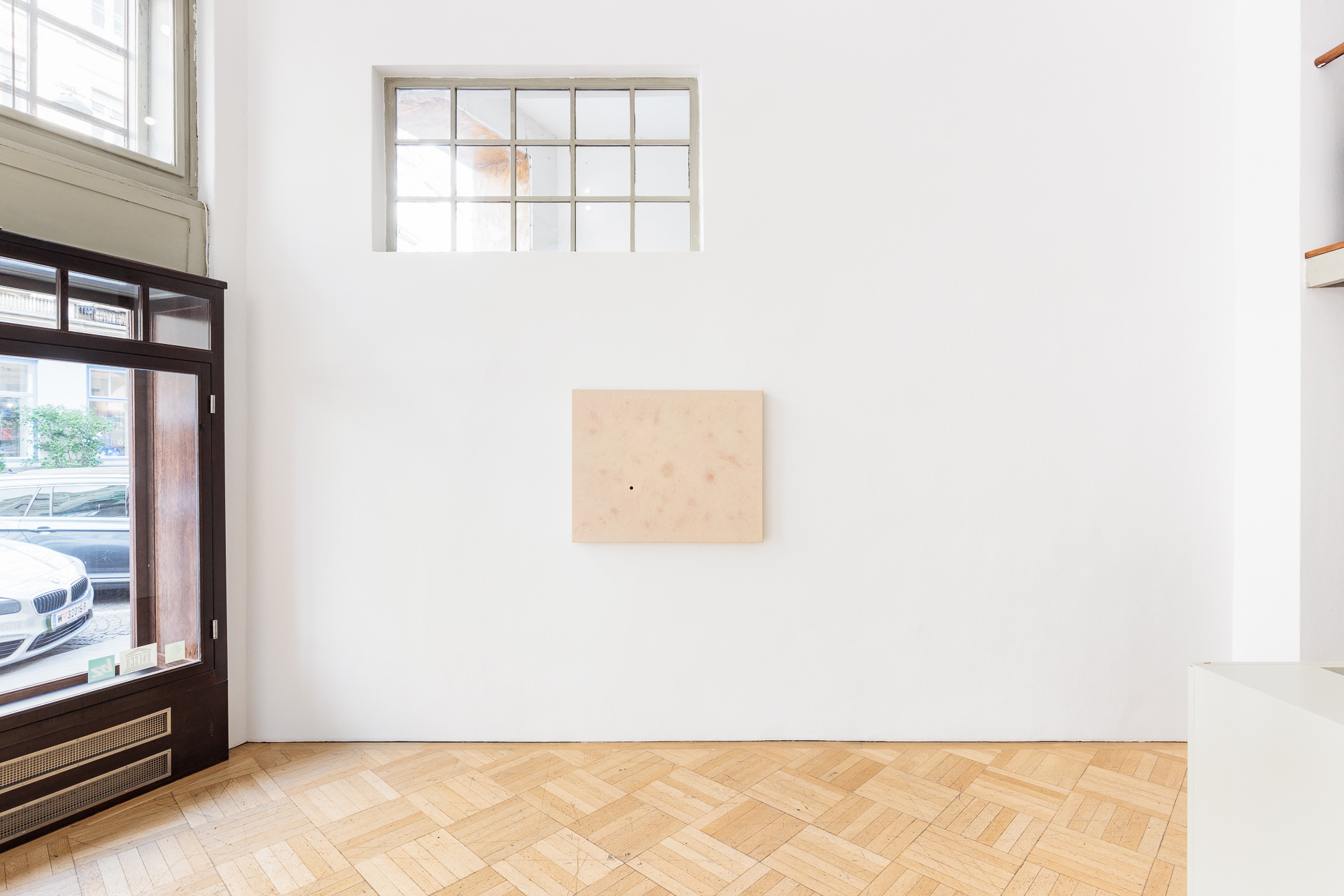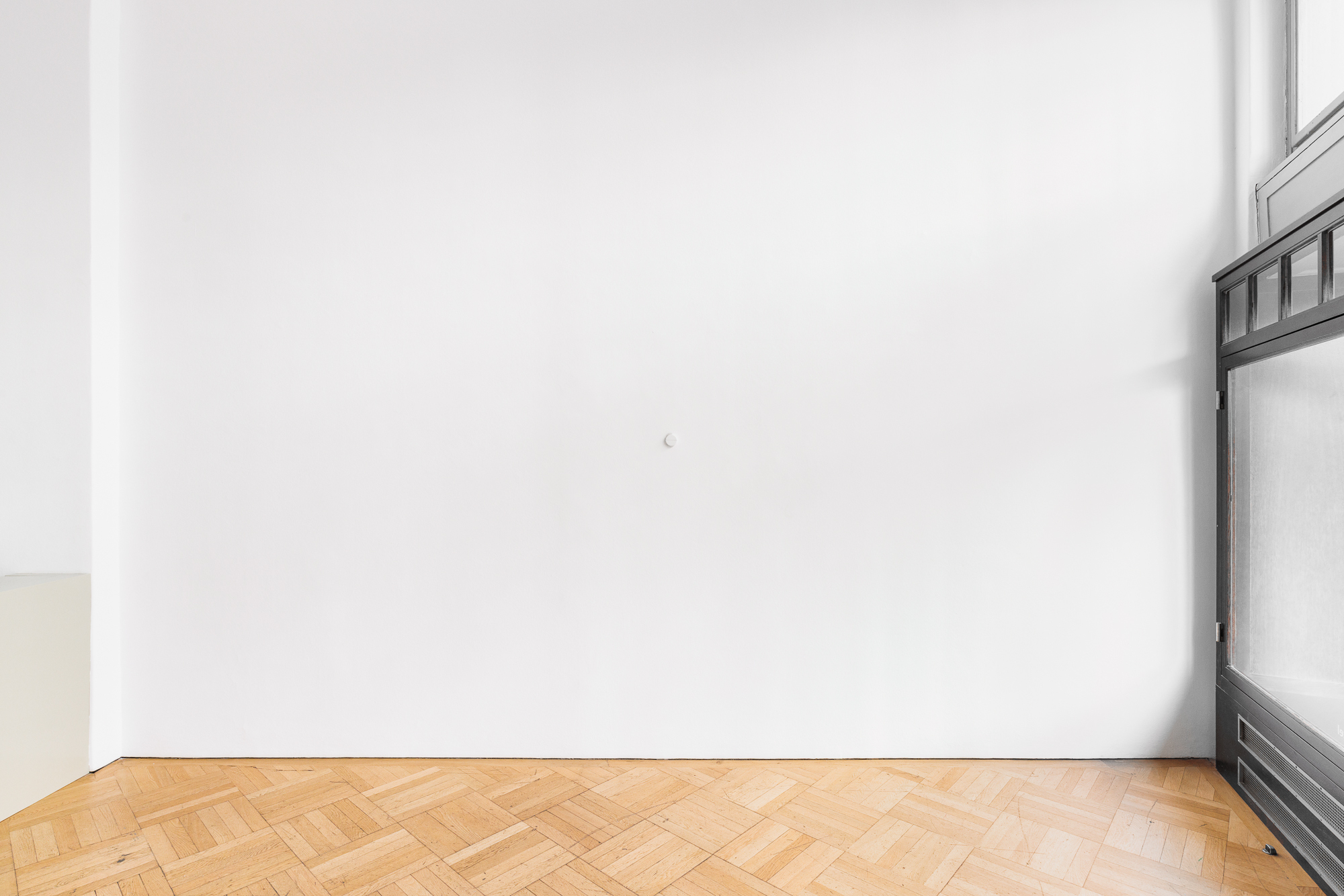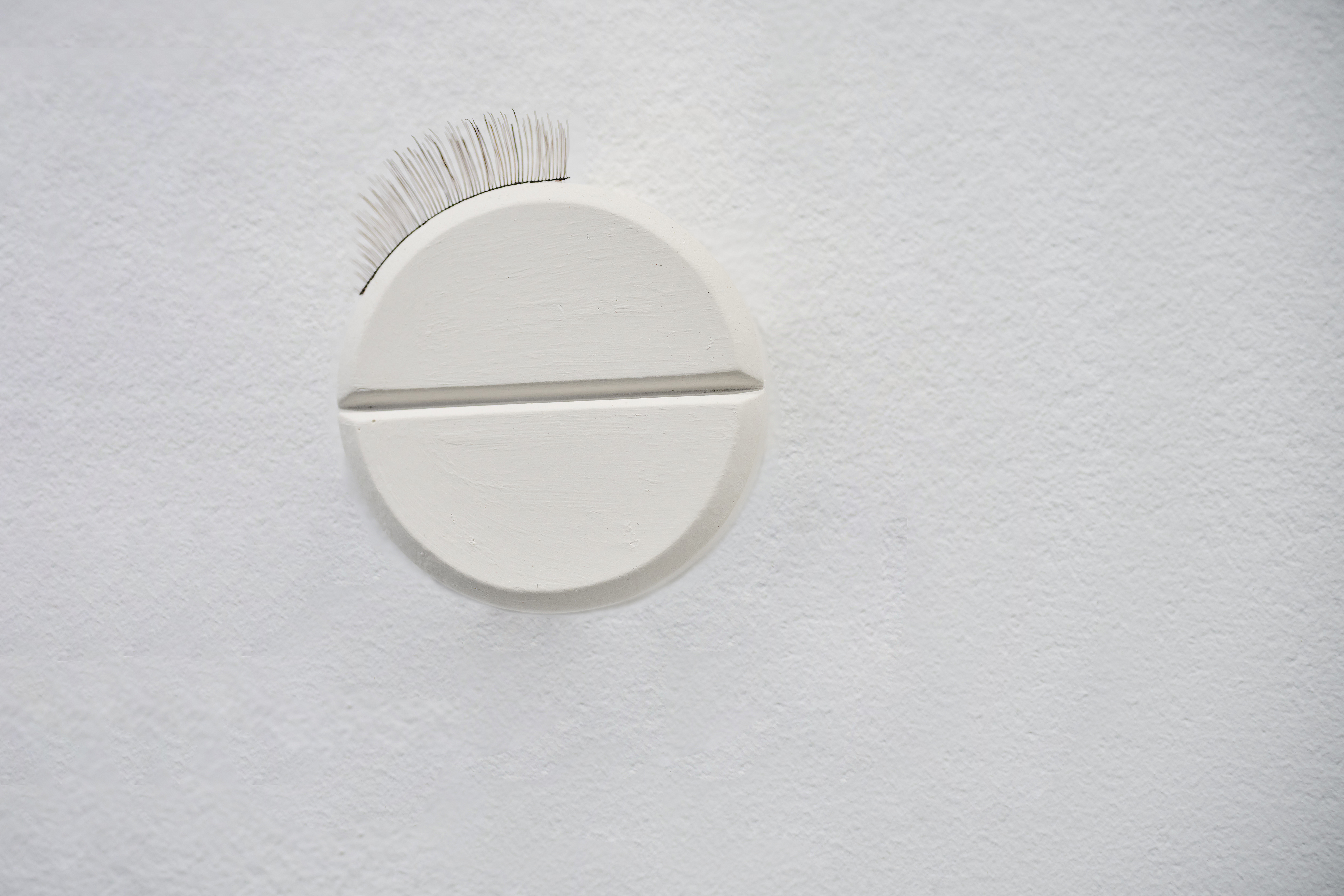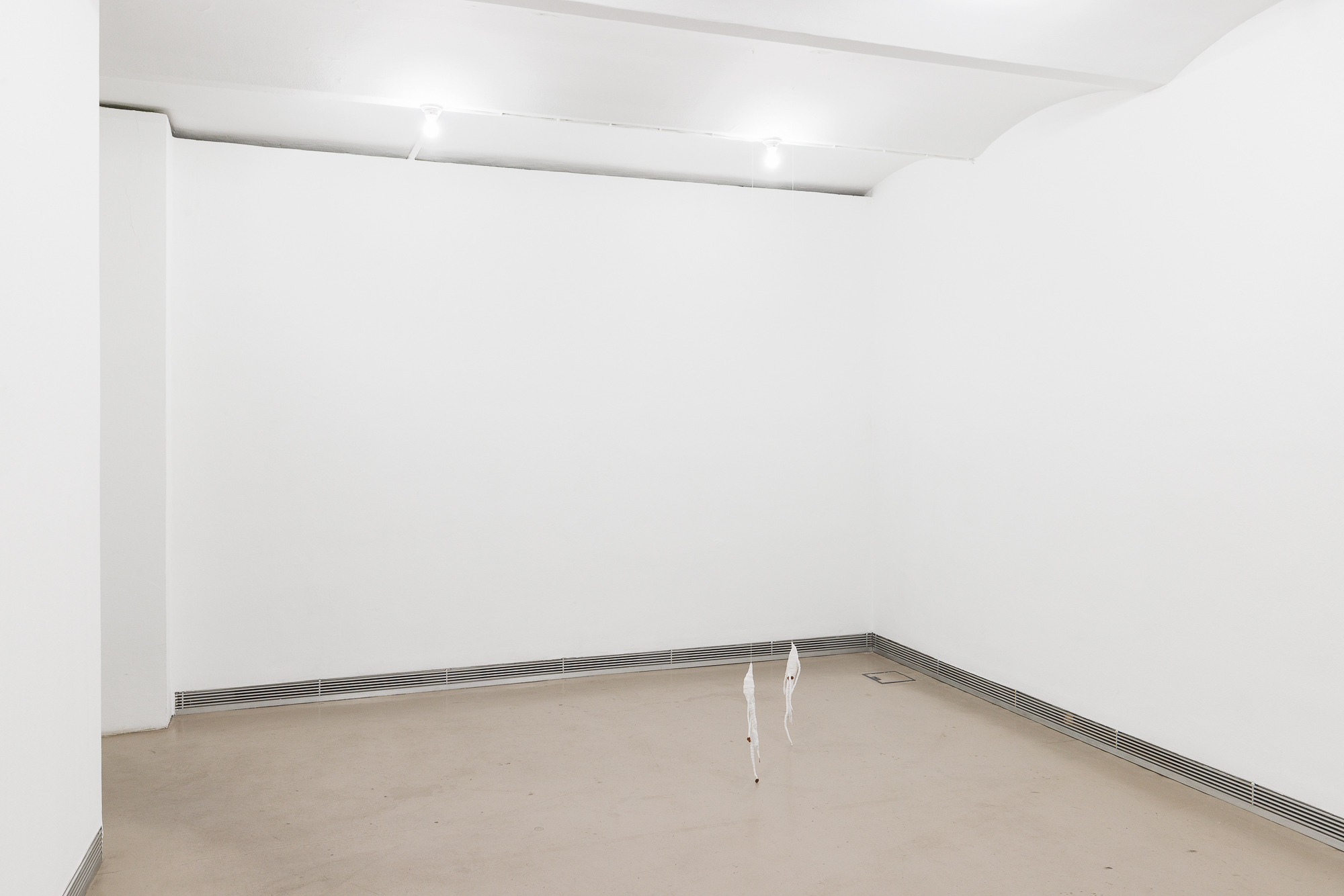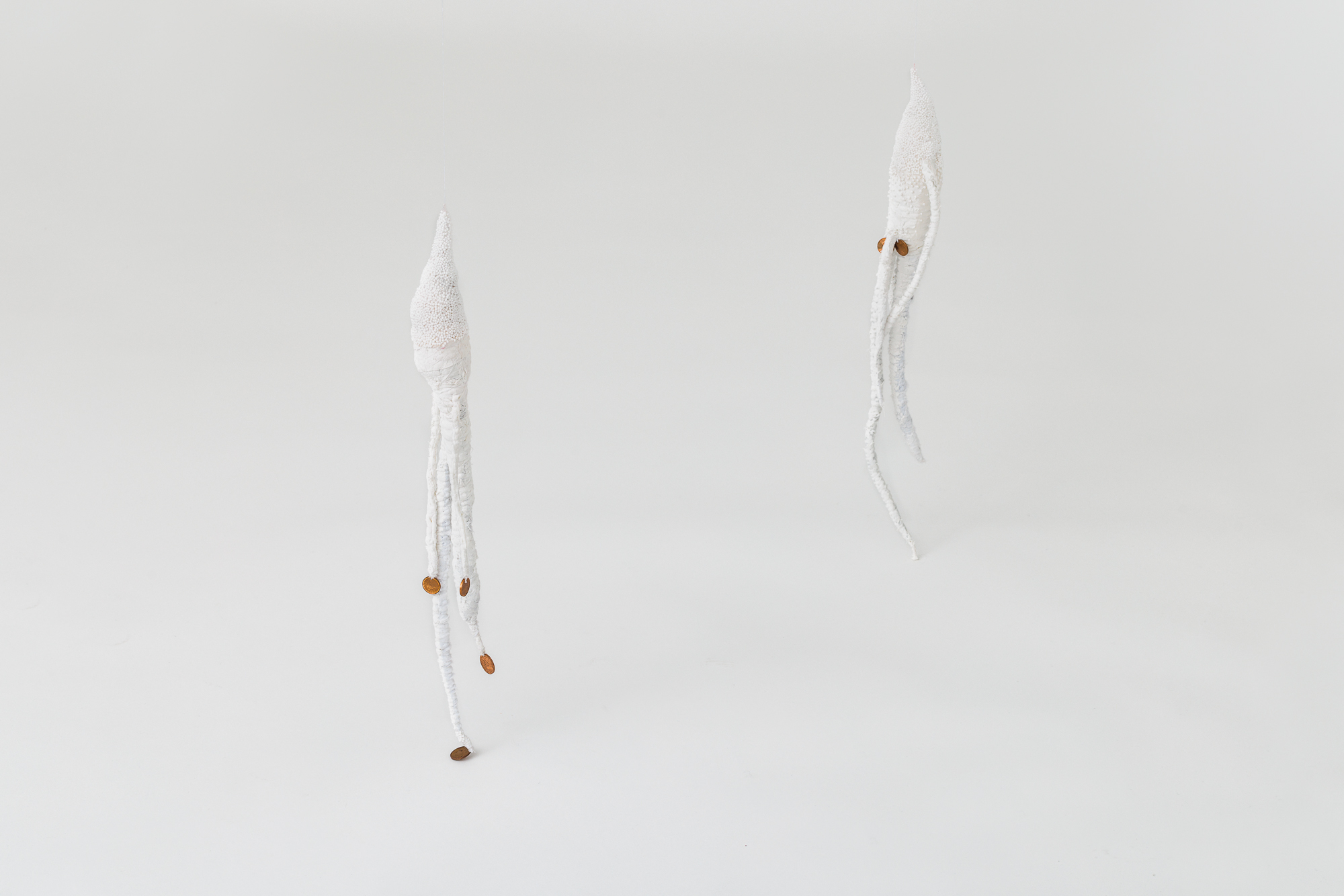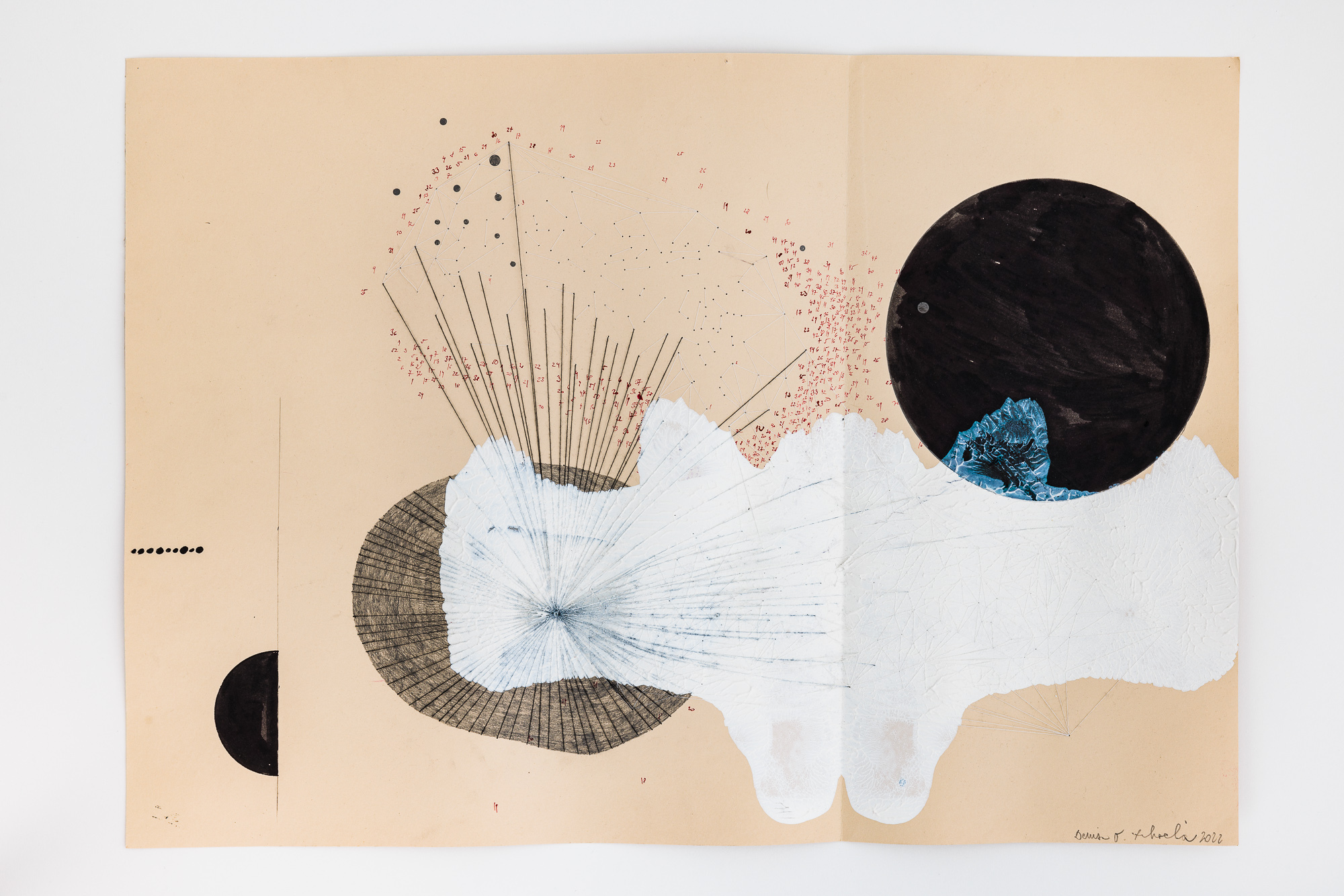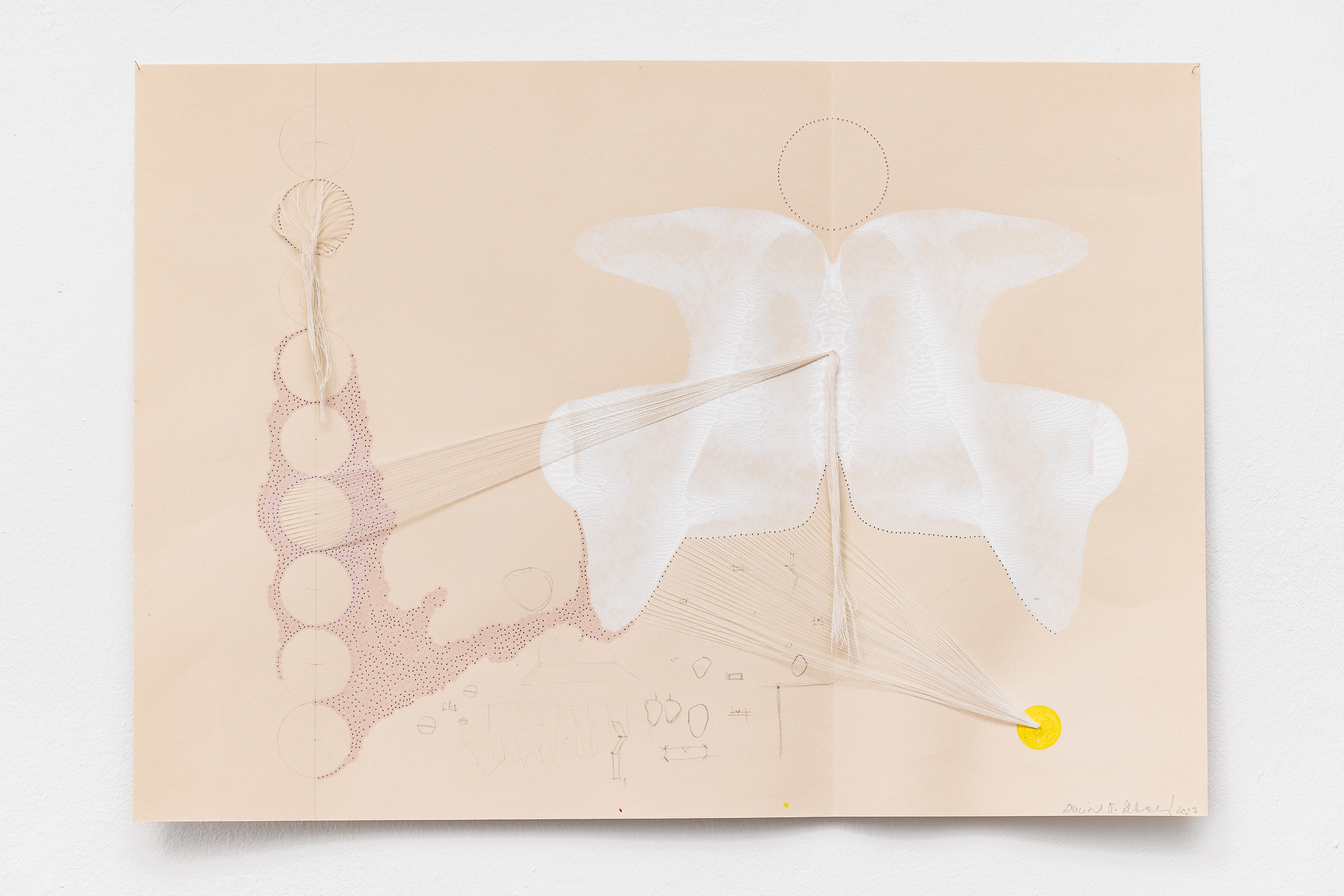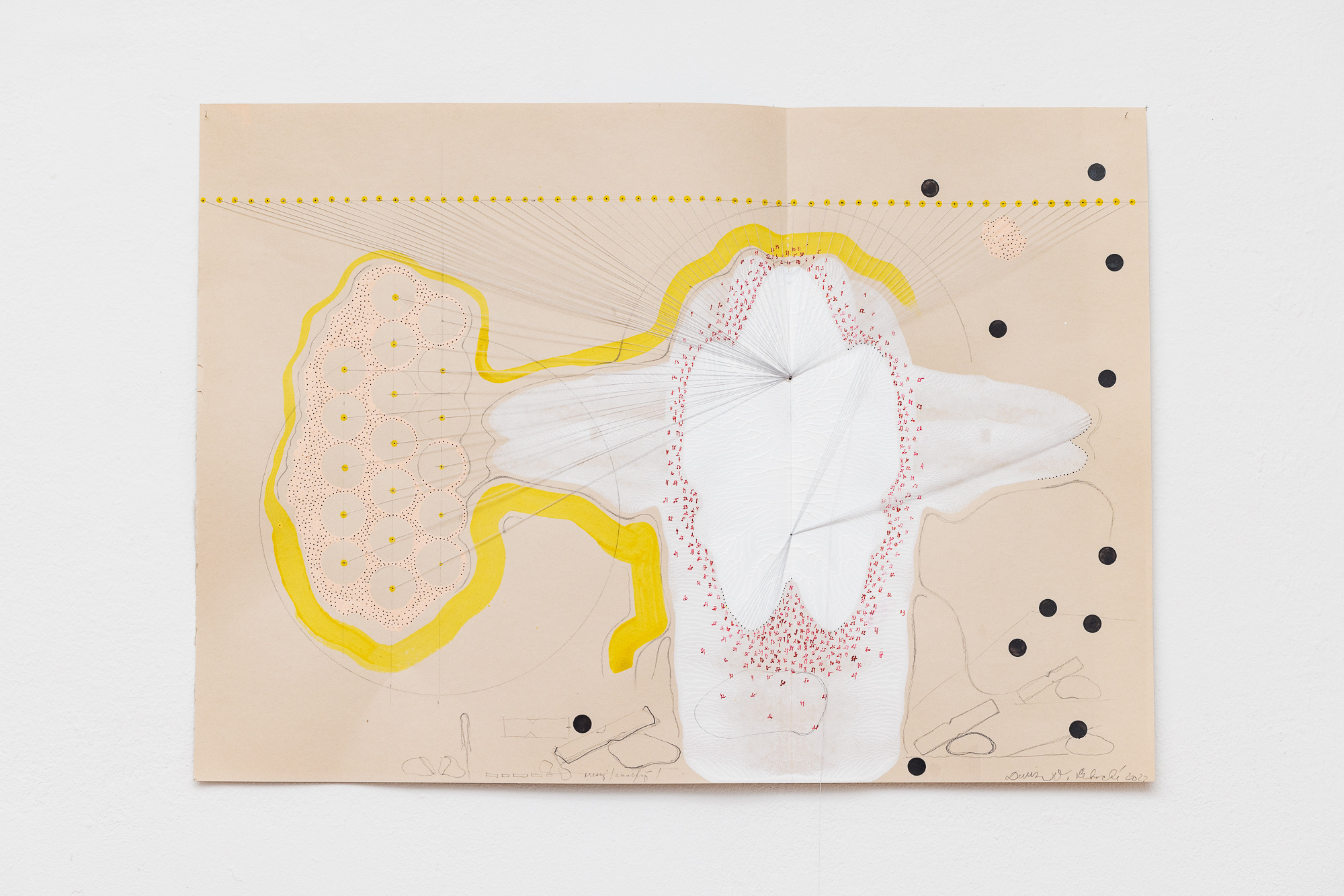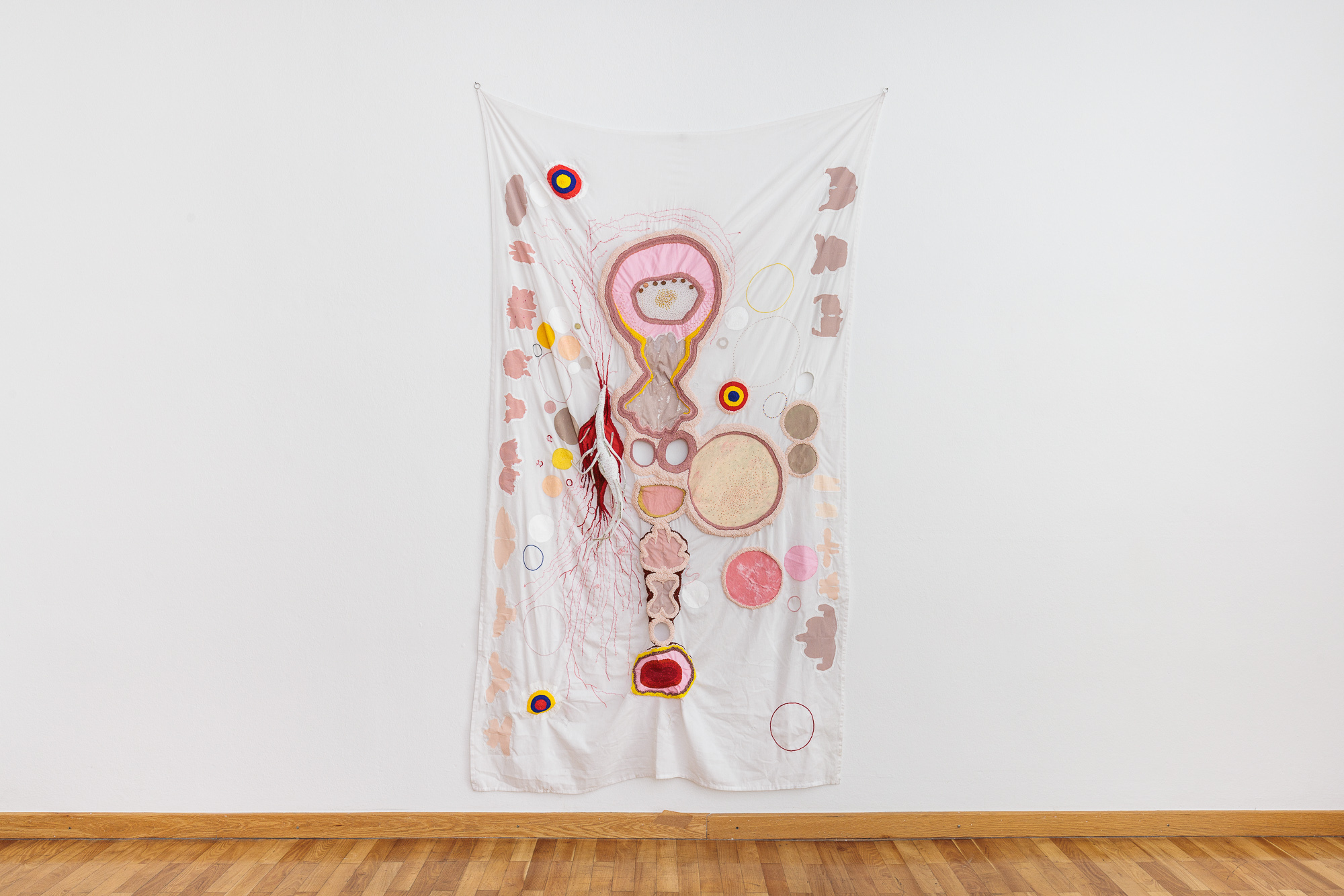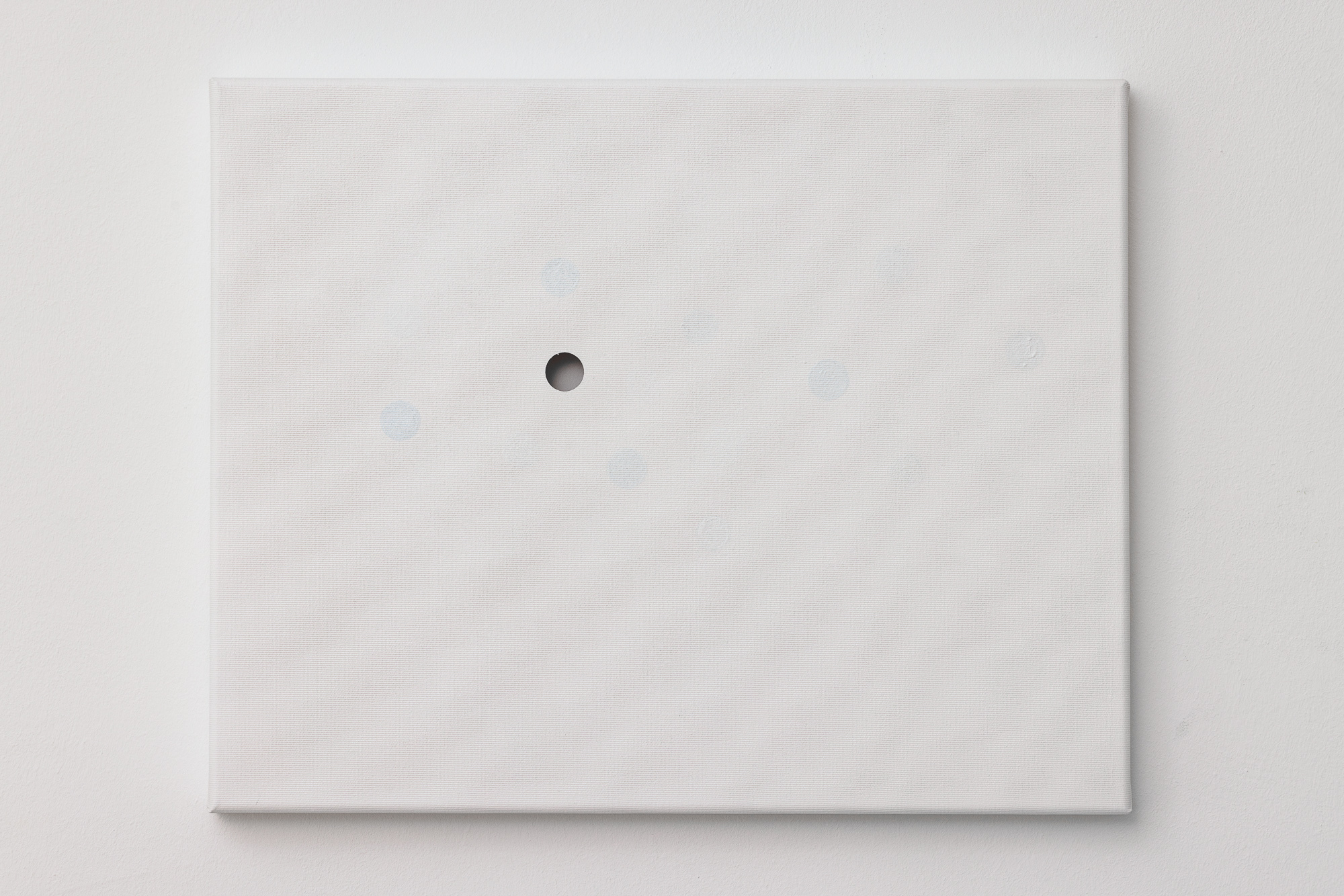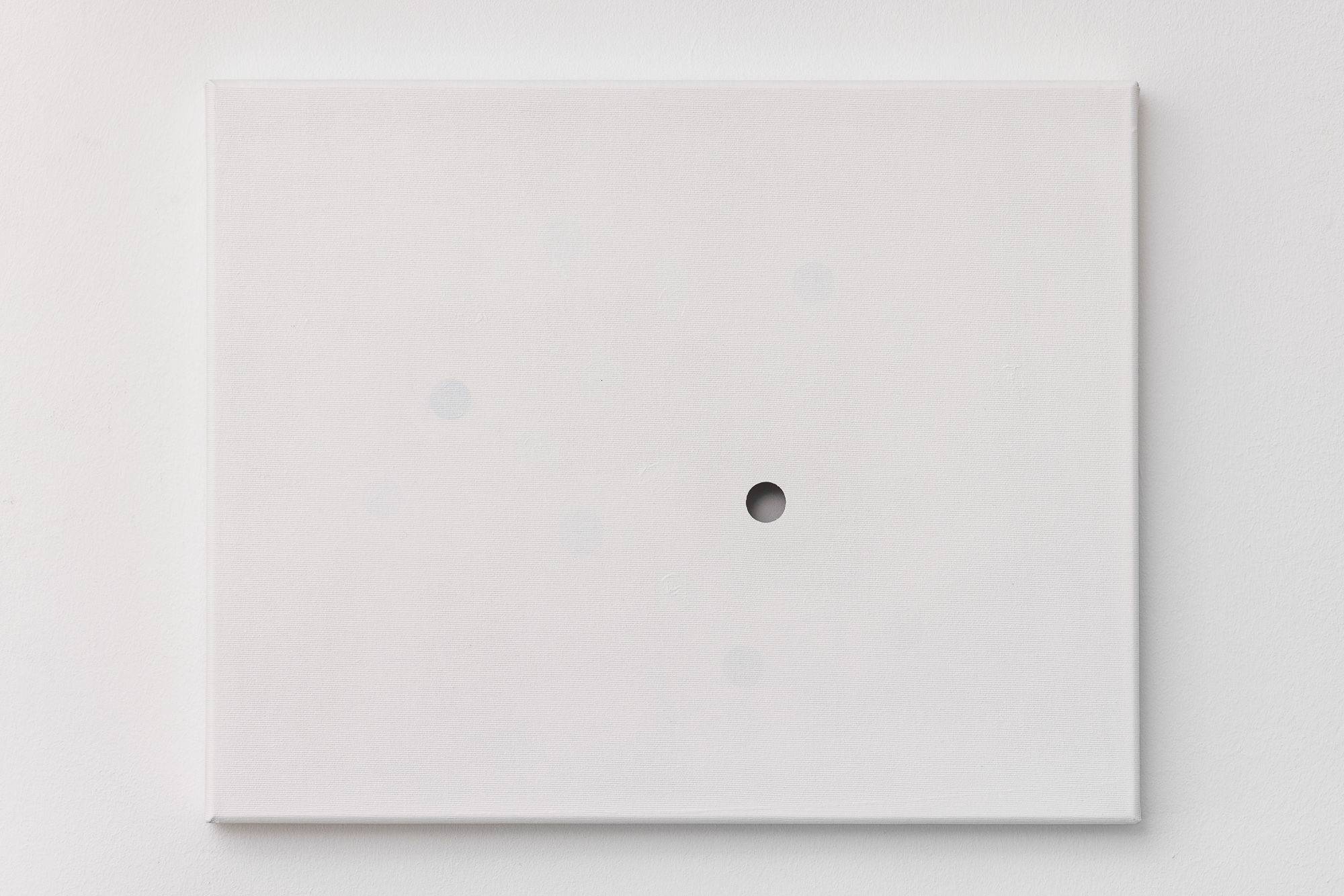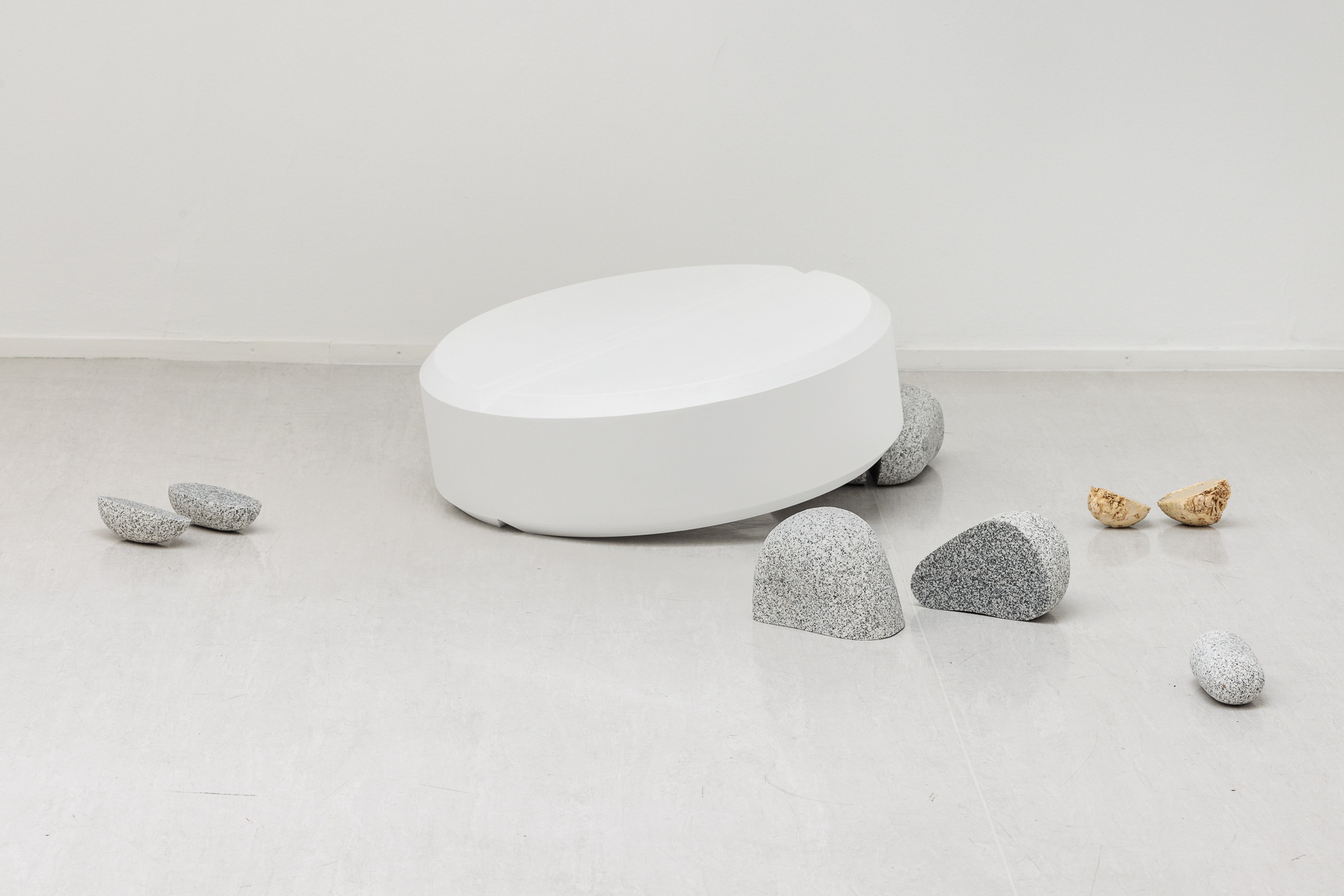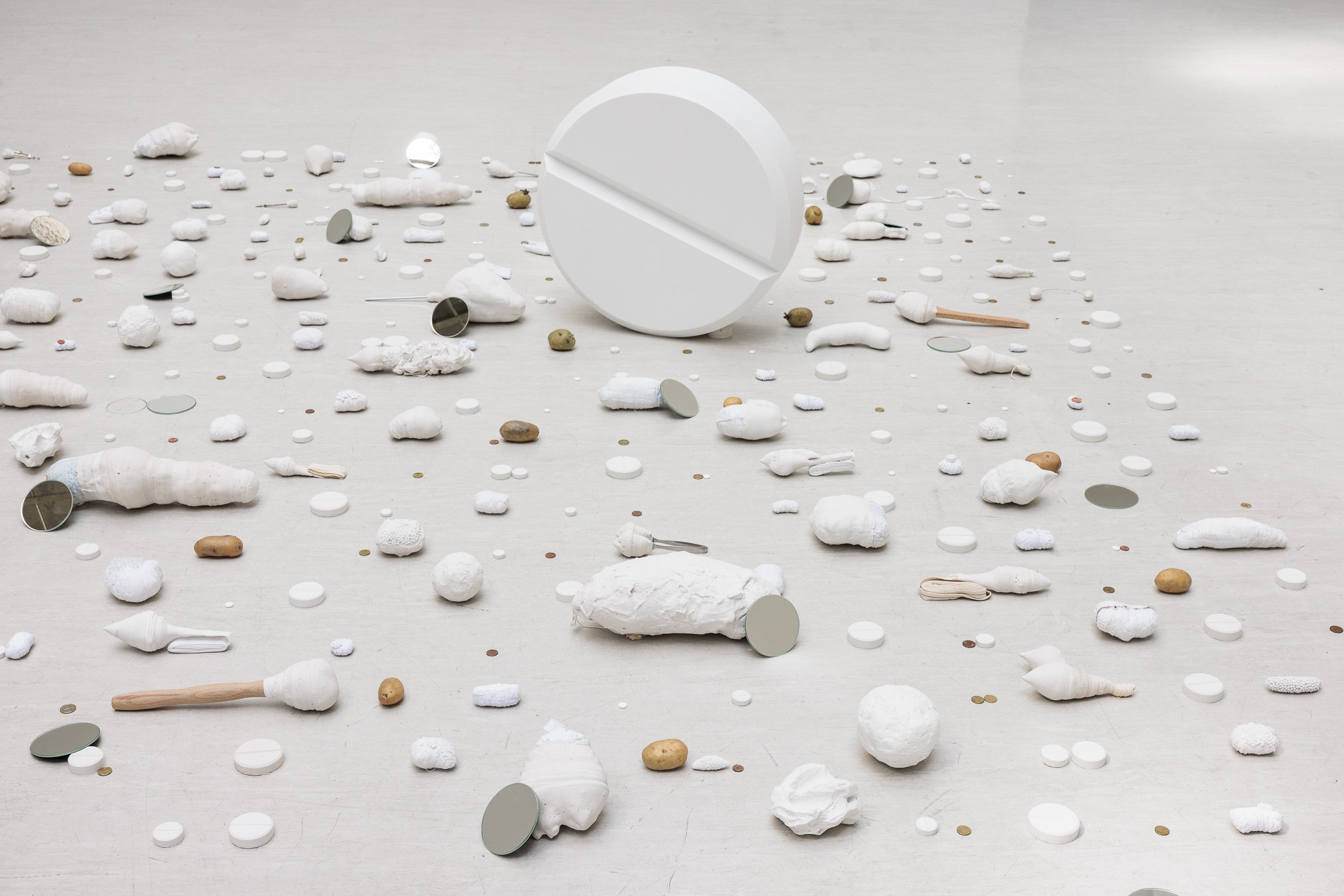—
Denisa Lehocká
POINT
Never Not Urgent:
Taking respite with the work of Denisa Lehocka
By Maria Hlavajova
There is an object on my desk that I cherish tremendously. Whenever I need respite from the grueling, ceaseless flow of work, even if for a nanosecond, my eyes try to rest on it so as to soak little bit of energy and trick my mind to power forward against all odds . . . against perpetual exhaustion, against ridiculous demands, against pressing deadlines, against all things life—just like now.
The object in question has no title, or is at best named Untitled, as is customary in Denisa Lehocká’s work, but, honestly, I just don’t know. Neither am I sure when it was made or when she gifted it to me; it could have been anytime over the last thirty-plus years, throughout which she has been systematically and unwaveringly engaging in her work and which correspond roughly to the time we have known each other. This seems not insignificant—I mean, the fact that I cannot quite put a name and date to the object—for these labelling tropes of (western) art history, which routinely divide an ongoing practice into distinct works, or cast nascent explorations into isolated timelines, or break the flow of engagement into unrelated projects, might be of no consequence here. None of this applies. The said object could have been withdrawn, temporarily, from any of Lehocká’s installations, and, equally, it could be plugged back into her compositionist formations at any point, as they evolve in time. Just to be sure: this is not to say that the object is anonymous by any means, is interchangeable, or does not matter. On the contrary, the thing is of Lehocká’s oeuvre, and is unmistakably so. It belongs to her continuously emergent inquiry—an unending, enduring, incessant flow of exploration—not into individuated objecthood nor merely into what we simply call “art” but into the possibilities of living livable life otherwise than what we “know.”
The object I am talking about, of elongated shape—ovoid and phallic at once—is covered in hundreds, maybe thousands of tiny white beads. The beads are connected with one another and the substance beneath them with a white thread, which has—likely with the passing of time—changed its hue ever so slightly. It might be that it is this shifting shade that gives away the inside of the object, as it seeps through the few patches in between the pellets. Strangely, this inner physique, an amorphous body of sorts, seems to consist of the very same thread, albeit tangled and turned around itself millions of times. A yarn coiled and tousled and twisted until it not only holds its shape, both soft and firm, but also—in ways I cannot quite explain—holds space for my rest and at times for my thinking and my feeling.
I cannot quite fathom the amount of labor that went into this. The amount of ceaseless flow of work, not unlike that which I seek to break from when I stare at it. And that’s merely this one tiny thing. Just think of the sprawling installations of myriad alike elements that Lehocká composes together. With every object added, with every bead sewn in, with every string or cord tangled and snarled, with every new drawing drawn, with every embroidery needled, with every pearl glued to the piece of paper or twig or gauze or stone, with every form of plaster or clay molded, with every connection secured with a rope to hold all above together as equals, in balance and in relation . . . think about that labor.
Just why does it feel so different from the exhausting toil I seek to escape?
“As women,” feminist writer Audre Lorde once said, “we need to examine the ways in which our world can be truly different.”* Quite an ask, for as we drag through reality of which the “principal horror” is that it demands everything from us. We are emptied by its extractive logistics that feed on our capacity to live fulfilling lives and our capacity for joy and our capacity for love—love for work included. Berobbed and left disaffected “from so much of what we do,” where do we turn for “that sense of satisfaction and completion”? For that vital sensation of “fullness”?
“As women,” Lorde again, “we have come to distrust that power which rises from our deepest and nonrational knowledge,”* and that power is the power of “the erotic.”* Not that superficial thing at times mistaken in the men’s world for pornography, but the erotic as a source of power stemming from the deeply embodied knowledge one needs to reclaim from the way of the world today. The erotic as a question not merely “of what we do” but “of how acutely and fully we can feel in the doing.” “When I speak of the erotic,” says Lorde, “I speak of it as an assertion of the lifeforce of women; of that creative energy empowered, the knowledge and use of which we are now reclaiming in our language, our history, our dancing, our loving, our work, our lives.”*
And there you have it. The object on my desk, and per extension the work of Lehocká in its entirety, seems to stem precisely from the inner knowledge that only by systematic circumnavigating of the external directives and expectations—of what next urgency we must respond to, of what we do and how and when and with whom, of what the works of art must conform to—that “we begin to be responsible to ourselves in the deepest sense.”* The innermost power of the erotic at play here is to devote energy and labor not to the questions and pressures of and by the dominant order and the powers that be, but to the questions and yearnings of our own.
Those yearnings pursued in Lehocká’s work, then, embody a stubborn insistence on joy in work and in life, against all odds. It gives form to the understanding of and being in resistance to the world of exploitation. It is a refusal, both subtle and radical, to submit to perpetual exhaustion, to ridiculous demands, to pressing deadlines, to all things peripheral to the true meaning of life.
When in her studio, that stubborn and gratifying, committed and steadfast flow of Lehocká’s work goes into the patient, slowly unfolding, laborious connecting of the myriad tiny particles together into objects, and then the myriad objects into larger ones, and then those compositions into even larger formations. When brought out of the studio to become public, the work’s ethos of connecting implicates us all in it—by insisting on us to recognize our mutual interdependencies. It is, in fact, an act of sharing with others—of art and of labor—the proposition that another work, another us, and, thus, another way of life is possible. The act of sharing “the power of each other’s feelings,” to put it in other words, and, following Lorde, of the possibility to together “pursue genuine change within our world.”*
That the said object by Lehocká ended up on my desk, then, is no happenstance but the conscious act on the part of the artist to share with me in this energy and these beliefs. Whenever I am in need to borrow from this electrifying offer, I know it is not so to continue the daily grind expected from me but rather—entrusting that one is not alone but connected to others dealing with the same dilemmas—to excavate from within the world at present the potentials of a collective livable life, otherwise.
It is this celebration of the erotic in Lehocká’s work that, in spite of the world, is never not urgent.
Edited by Aidan Wall. With thanks to Rahel S. and Peter K.
*Audre Lorde, “Uses of the Erotic: The Erotic as Power”: Fourth Berkshire Conference on the History of Women, Mount Holyoke College, 1978.
Biography
Born 1971 in Trenčin, lives and works in Bratislava, SK
Selected Solo Exhibitions
2025
Untitled 2025, Lombardi—Kargl, Vienna
2023
Lehocká for National Gallery, Tatra banka Donation for SNG Collections, Slovak National Gallery, Bratislava
POINT, Georg Kargl Fine Arts, Vienna
2021
untitled, Kunsthalle Bratislava, Bratislava
2021, Collective, Bratislava, Bratislava
2018
Futura, Prague
2016
Luno 550, Fait galerie, Brno
Gandy Gallery, Bratislava
2015
Dite, Dům Umění, České Budějovice
2014
Denisa Lehocká and Eva Kotakova, Hunt Kastner, Prague
2013
Denisa Lehocká, Sammlung Friedrichshof, Vienna
2012
Denisa Lehocká 2012, Slovak National Gallery, Bratislava
2011
Try to describe the colour of pure (still) water, my dear., Badischer Kunstverein, Karlsruhe
2010
Denisa Lehocká 1991-2010, GJK, Trnava
2009
no places no frontiers, Dominik art project, Krakow
tranzit, Bratislava
2008
Austrian Cultural Institute, Prague
2005
Moravská galerie, Brno
Landscape, with Boris Ondreička, BAK, Basis voor Actuele Kunst, Utrecht
2001
Galerie MXM, Prague
2000
Múzeum V. Löfflera, Košice
Selected Group Exhibitions
2025
The Neurobiology of Love, Krupa Art Foundation, Wrocław
2024
Reversed Objects, Ludwig Múzeum, Budapest
Body at Play, Georg Kargl BOX, Vienna
2023
Hard/Soft Textil und Keramik in der zeitgenössischen Kunst, MAK, Vienna
2022
I Had a Dog and a Cat, curated by Hana Ostan Ozbolt, Georg Kargl Fine Arts, Vienna
Twilight Zone / Material Narratives, Kunstverein Eisenstadt, Eisenstadt
2021
The Trafo-Clique. Material Narratives, Kunstverein Eisenstadt, Eisenstadt
2020
_SNÍVAJ!?_ / DREAM!?, Slovak National Gallery, Bratislava
2019
Sleeping with a Vengeance, Dreaming of a Life, Württembergischer Kunstverein, Stuttgart
Transmediale, Import Projects and HKW, Berlin
2018
Women on paper, Espace de l’art Concret, Mouans-Sartoux
2017
Empire of The Senseless, Meetfactory, Prague
TŘETÍ MYSL. Jiří Kovanda a (Ne)možnost spolupráce, National Gallery Prague, Prague
2015
The school of Kyiv, Kyiv Biennial, Kyiv
Thirtyone, KUG, Priština
Skrytá řeč rostlin, National Gallery Prague, Prague
The Soft Codes, Wroclaw Contemporary Museum, Wroclaw
2014
Report on the Construction of a Spaceship Module, New Museum, NYC
On Generation and Corruption, BWA Contemporary Art Gallery/Galeria Sztuki Wspolczesnej, Katowice
2013
Lapidárium, Galerie Jaroslava Frganera, Prague
2010
...and don't forget the flowers, Moravská galerie, Brno
2009
Gender Check, MUMOK, Stiftung Ludwig, Vienna
2008
Cutting Realities - Gender Strategies in Art, Austrian Cultural Forum, NYC
Mediation Biennale 8, ZAMEK Culture Centre, Poznaň
Family Affairs, Kunstverein Ulm
Re-Reading the Future, International Triennale of Contemporary Art, National Gallery Prague, Prague
Micronarratives, Museum of Modern Art, St. Etienne
2007
Form Follows Risk, Futura, Prague / Slovak National Gallery, Bratislava
48th October Salon - Temptation of small realities – micro-communities, Belgrade Cultural Center, Belgrade
2006
Auditorium, Stage, Backstage, Frankfurter Kunstverein, Frankfurt am Main
Narratives - 35/65+: Two Generations, Kunsthaus Graz Landesmuseum Joanneum, Graz
Kontakt, MUMOK, Stiftung Ludwig Vienna AT & tranzit workshops, Bratislava
2005
The Giving Person, Palazzo delle arti Napoli, Naples
2004
Stadt In Sicht, Kunstlerhaus, Vienna
Anxiety of Influence, Stadtgalerie Bern, Bern
Cordially Invited, BAK, basis voor actuele kunst, Utrecht
2003
Now What? On Hope and Other Misunderstanding, BAK, Basis voor Actuele Kunst, Utrecht
2002
Fragile, Daejeon Museum of Art, Daejeon
Nomad, Brugs Cultuurcentrum, Brugge
Women Of The World, White Columns, NYC
Pass me the Butterfly, DUMBO Art Cener, NYC
2001
Event. Image. Clone, Tallinn Art Hall, Tallinn
2000
Body-Space / Nets and other creations, Kunsthalle Basel, Basel
borderline sydrome / energies of denfence, Manifesta 3, Lublijana
1999
Slovak Art for Free, 48. Biennale di Venezia: Pavilion of Slovak Republic, Venice
1996
60/90, 4th Annual exhibition of SCCA Slovakia, Soros Centers for Contemporary Art, Bratislava
Biblio (Selection)
Denisa Lehocká, Collective, SK, 2022
Denisa Lehocká, Schlebrügge, AT, 2014
Denisa Lehocká, Slovenská národná galéria, SK, 2012
Denisa Lehocká, tranzit.sk, SK, 2009
Collections (Selection)
Kontakt, Erste Bank Group Collection, Vienna
EVN Collection, Vienna
Sammlung Friedrichshof, Vienna, ATEuropean Investment Bank, Luxembourg
Fiorucci Art Trust, Monaco & London
Societé Generale, Paris
The Daniel and Florence Guerlain Collection, Les Mesnuls
Fait, Brno
Artfond, Bratislava
Collective Collection, Bratislava
Slovak National Gallery, Bratislava
NG, Nitra
PGU, Žilina
GJK, Trnava
And private: Slovakia, Czechia, Poland, Austria, Hungary, Germany, France, Monaco, Belgium, Japan, UK, USA
Residencies, Awards, Grants
2021
Startstipendium für Fotografie, Bmkoes
Wojda Residency, Steinbrunn
2019
Moriumius Resideny, Ishinomaki
Landxcapes Visual Art, Bjcem
Inquiry
Please leave your message below.
